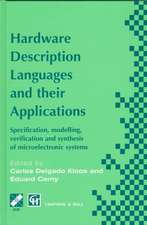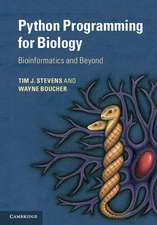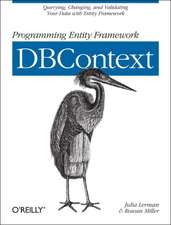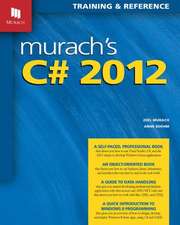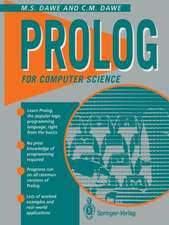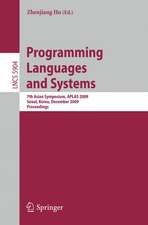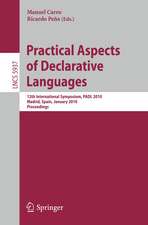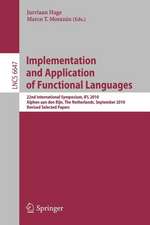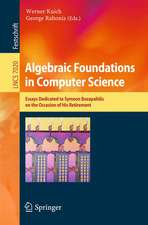XML for Bioinformatics
Autor Ethan Ceramien Limba Engleză Hardback – 15 mar 2005
| Toate formatele și edițiile | Preț | Express |
|---|---|---|
| Paperback (1) | 364.34 lei 6-8 săpt. | |
| Springer – 24 dec 2010 | 364.34 lei 6-8 săpt. | |
| Hardback (1) | 340.82 lei 6-8 săpt. | |
| Springer – 15 mar 2005 | 340.82 lei 6-8 săpt. |
Preț: 340.82 lei
Preț vechi: 426.03 lei
-20% Nou
Puncte Express: 511
Preț estimativ în valută:
65.21€ • 68.27$ • 53.96£
65.21€ • 68.27$ • 53.96£
Carte tipărită la comandă
Livrare economică 05-19 aprilie
Preluare comenzi: 021 569.72.76
Specificații
ISBN-13: 9780387230283
ISBN-10: 0387230289
Pagini: 304
Ilustrații: XVI, 304 p. 59 illus.
Dimensiuni: 178 x 254 x 20 mm
Greutate: 0.65 kg
Ediția:2005
Editura: Springer
Colecția Springer
Locul publicării:New York, NY, United States
ISBN-10: 0387230289
Pagini: 304
Ilustrații: XVI, 304 p. 59 illus.
Dimensiuni: 178 x 254 x 20 mm
Greutate: 0.65 kg
Ediția:2005
Editura: Springer
Colecția Springer
Locul publicării:New York, NY, United States
Public țintă
Professional/practitionerCuprins
to XML for Bioinformatics.- Fundamentals of XML and BSML.- DTDs for Bioinformatics.- XML Schemas for Bioinformatics.- Parsing NCBI XML in Perl.- The Distributed Annotation System (DAS).- Parsing DAS Data with SAX.- Parsing DAS Data with JDOM.- Web Services for Bioinformatics.
Notă biografică
Ethan Cerami is Senior Software Engineer at the Computational Biology Center, Memorial Sloan-Kettering Cancer Center, New York, NY. Since 1997 he has also been a member of the Adjunct Faculty in Computer Science at New York University.
Textul de pe ultima copertă
XML, or Extensible Markup Language, is rapidly becoming a critical tool in bioinformatics and biological data exchange. XML is currently used to represent a diverse set of biological data, from nucleotide and protein sequences to protein-protein interactions and signal transduction pathways. XML is also used in a wide array of bioinformatics applications, including stand-alone applications, federated database systems, distributed applications, and web services.
The goal of XML for Bioinformatics is to provide a solid introduction to the emerging use of XML in the field of bioinformatics. It assumes no prior knowledge of XML, and illustrates all core concepts with specific bioinformatics examples and case studies. Core XML concepts include: fundamentals of XML, Document Type Definitions (DTDs), XML Namespaces, XML Schema, XML parsing in Perl and Java, web services and SOAP. Examples and case studies are drawn from a wide range of bioinformatics applications, including the Bioinformatic Sequence Markup Language (BSML), NCBI E-Fetch, the Distributed Annotation System (DAS), and the National Cancer Institute Cancer Bioinformatics Infrastructure Objects (caBIO) project.
A companion web site, available at: http://www.xmlbio.org/, provides complete access to all examples in the book.
The goal of XML for Bioinformatics is to provide a solid introduction to the emerging use of XML in the field of bioinformatics. It assumes no prior knowledge of XML, and illustrates all core concepts with specific bioinformatics examples and case studies. Core XML concepts include: fundamentals of XML, Document Type Definitions (DTDs), XML Namespaces, XML Schema, XML parsing in Perl and Java, web services and SOAP. Examples and case studies are drawn from a wide range of bioinformatics applications, including the Bioinformatic Sequence Markup Language (BSML), NCBI E-Fetch, the Distributed Annotation System (DAS), and the National Cancer Institute Cancer Bioinformatics Infrastructure Objects (caBIO) project.
A companion web site, available at: http://www.xmlbio.org/, provides complete access to all examples in the book.
Caracteristici
As XML is gaining widespread appeal as a primary language in the bioinformatics community this professional reference will be valuable resource to practicing biologists, software engineers, and bioinformatics professionals in laboratory and academic settings. It provides a comprehensive introduction to XML from the basics to intermediate concepts and includes current XML bioinformatics applications.




